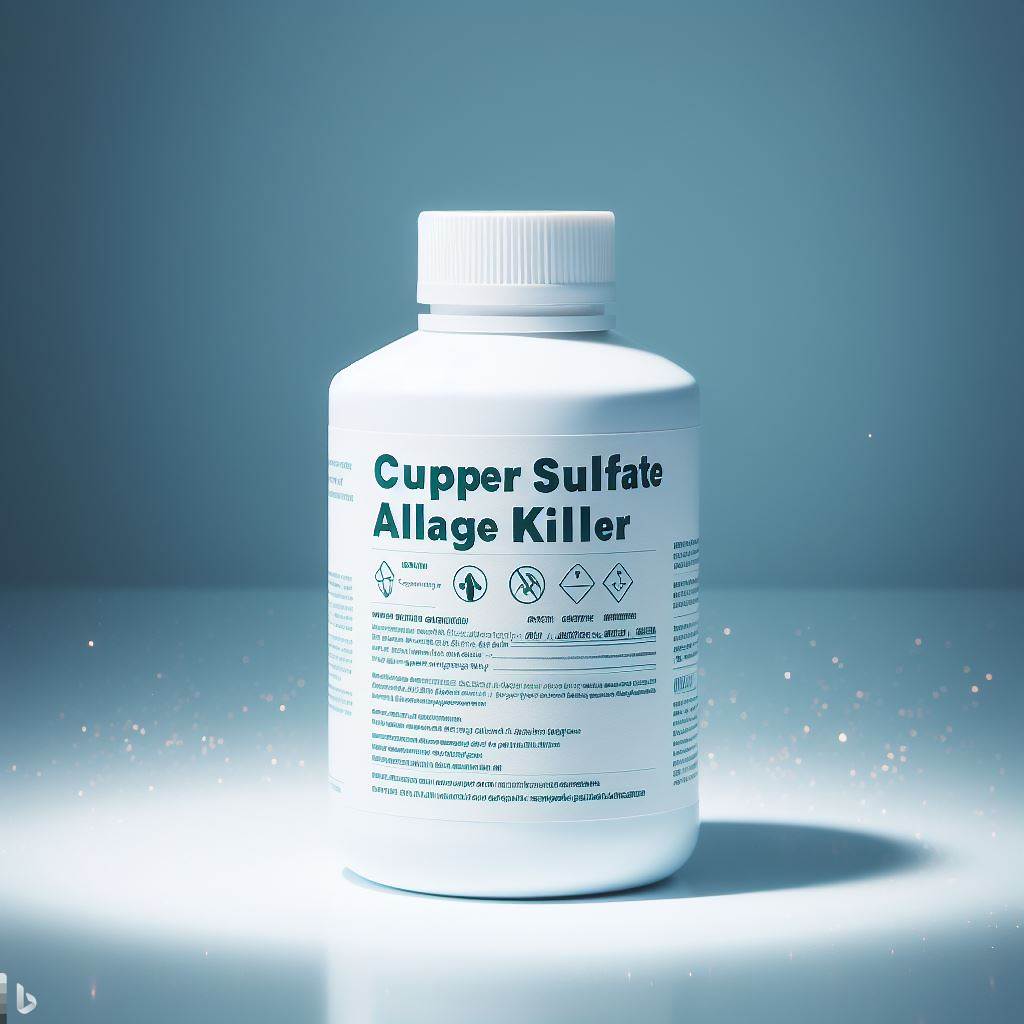Copper sulfate is a swimming pool algaecide with a long history of use and a wide range of applications. Copper sulfate can be used to maintain water cleanliness and avoid a series of problems caused by excessive algae. As an economical, simple, and efficient management method, copper sulfate has gradually gained attention. However, when using algae fungicides, it is necessary to pay attention to the dosage. Excessive use will cause a series of problems. Below, we will introduce what problems are caused and how to use copper sulfate reasonably.

Copper ions mainly exert toxic effects on algae through the following mechanisms
- Inhibiting enzyme activity: Copper ions can interact with certain enzymes in algal cells, causing conformational changes, and thereby inhibiting the vitality of algal cells. Algal enzymes are central to the metabolism of algal cells, and their reduced activity directly affects the productivity and material transport of algae, further limiting the growth of algal cells.
- Destroying cell structure: Copper ions can destroy the phospholipid bilayer of algal cells and compromise the integrity of the cell membrane. This results in the loss of key components within the cell, while external harmful substances invade the cell, leading to the death of green algae.
- Forming reactive oxygen species: In algae, copper ions undergo oxidation-reduction reactions, generating reactive oxygen species such as superoxide anions and hydrogen peroxide. These ROS species have strong oxidizing properties on the structure and molecules of algal cells, causing damage to proteins, nucleic acids, lipids, and other substances in algal cells, leading to cell dysfunction and subsequent cell death.
The hazards of excessive use of copper sulfate in swimming pools
A. Damage to the aquatic ecosystem
Although swimming pools are different from natural waters and do not have a complex ecological environment, excessive copper sulfate can still lead to water quality deterioration. Excessive copper ions in the water can disrupt the micro-ecological balance, inhibiting the growth of beneficial bacteria, which are important for maintaining water cleanliness and preventing the growth of harmful bacteria. Additionally, when the content of copper ions in the water is high, it can change the color of the water, affecting the cleanliness of swimming pool water.
B. Health risks associated with copper accumulation
High levels of copper ions in swimming pool water can harm swimmers. Copper ions can be absorbed through the skin and can also be accidentally inhaled through water. Prolonged or high-dose exposure to copper ions can cause skin allergies, such as erythema and itching, and in severe cases, it can cause hair color changes, especially in light-colored or bleached hair. For infants and young children, their bodies are less tolerant to copper ions, resulting in higher health risks.
In conclusion, excessive use of copper sulfate in swimming pools can damage water quality, harm swimmers’ health, and lead to legal and environmental issues. Therefore, it is recommended that swimming pool operators use copper sulfate reasonably and strictly adhere to relevant regulations and standards for water quality management to ensure the safety and cleanliness of swimming water.
How to Avoid Overuse of Copper Sulfate in Swimming Pools
A. Establishing a Reasonable Use Plan
The use of copper sulfate should be based on the size and type of water: Before applying copper sulfate for algae prevention, the appropriate amount should be determined based on the size and water quality characteristics of the swimming pool. This requires the management personnel to have a full understanding of the water area, and under the guidance of experts, to reasonably set the water use amount of the swimming pool based on their own experience and recommendations.
Regular water quality checks: To ensure that the use of copper sulfate meets safety standards, it is necessary to regularly check the water quality of the swimming pool, especially the content of copper ions in the water. This method can be used to evaluate the algae inhibiting effect and prevent excessive accumulation of copper ions in the water, allowing for targeted adjustments.
B. Exploring Alternative Methods
Biological control methods: Although there are some limitations to applying biological control technology in artificial waters such as swimming pools, non-toxic microbial agents can sometimes be used to inhibit the growth of algae.
Physical control methods: Physical methods such as ultraviolet disinfection and ozone treatment can reduce the content of algae and other microorganisms in the water, and generally do not harm the human body.
C. Cultivating a Healthy Aquatic Ecosystem
For swimming pools, cultivating a healthy aquatic ecosystem mainly involves maintaining a good water environment. This includes regularly cleaning the bottom and walls of the pool, ensuring the function of the filter, adding appropriate algaecides and pH adjusters, maintaining a suitable water temperature, and ensuring proper water circulation. On this basis, further reduce the dependence on chemicals such as copper sulfate, decreasing the living space for algae and other harmful microorganisms.
In summary, this article outlines copper sulfate algae killing technology, especially its application in swimming pools. Copper sulfate does indeed play a significant role in inhibiting the growth of algae, but excessive use can cause environmental harm, which is a problem that cannot be ignored.

 Instant
Quote
Instant
Quote Email
Us
Email
Us